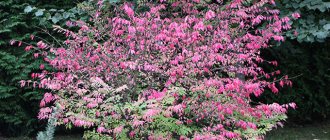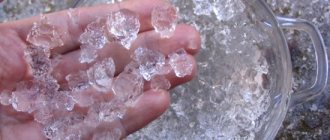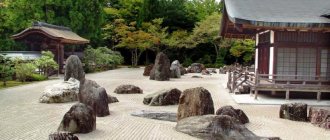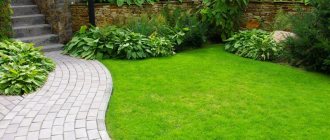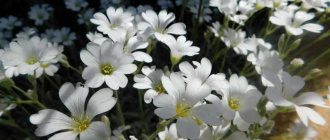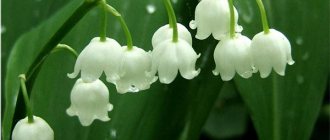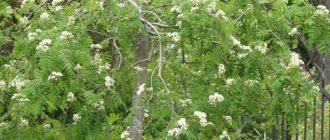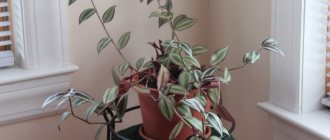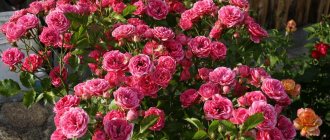Types of moss
There are a huge variety of types of moss. But they are all united by the lack of a root system and flowers. Green pads need very little to grow: moisture and diffused light. Many people believe that moss causes allergies. However, this opinion is erroneous, as people often confuse moss and mold. Therefore, if you want to decorate your apartment, garden, aquarium or vegetable garden with a beautiful green carpet, then you should not deny yourself this. Bryophyte will not cause any harm, as it is a full-fledged ornamental plant.
The following types of moss are distinguished:
- Forest moss (or Christmas moss). This species got its name because of the shape of the leaves: they resemble Christmas tree needles that grow in layers. © https://ydoo.info/qa/kak-vyrastit-moh.htmlForest moss grows very slowly and only under optimal conditions. The temperature should not exceed +22 degrees. The light should be diffused: there is more shadow than sun.
- Fern. The name speaks for itself, since moss leaves are very similar to fern leaves. This species loves shade. Moss grows quickly and thickly.
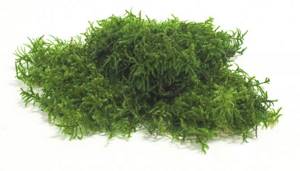
- Richia. This representative is the most common throughout the world. Moss grows in a ball shape and, unlike other species, needs sunlight.
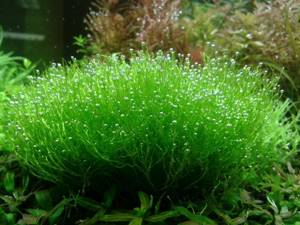
- Key. This species is no less common than richia. The color of moss depends on the lighting, for example, you can find red and dark green shades. The main feature of key moss is its unpretentiousness. Grows quickly and well.
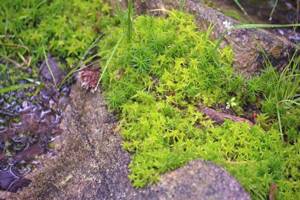
- Hypnotic. This type of moss grows on stones, soil and branches. Hypnum bryophyte especially needs shade.
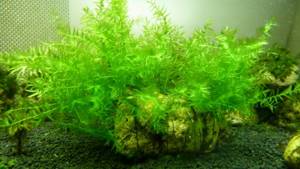
- Peat (or sphagnum). Anyone who loves indoor plants and grows them knows that some flowers, such as orchids, cannot live without peat moss. The “native” habitat of sphagnum is a swamp.
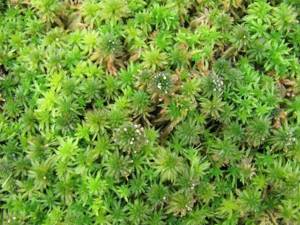
- Weeping. The height of such moss is no more than 50 centimeters. Bryophyte branches fall down, forming a beautiful green crown. You can find moss on trees.

- Javanese. This type of moss is easy to care for and feels great in both dark and light ponds. Quite often, Javan bryophyte is placed in aquariums.
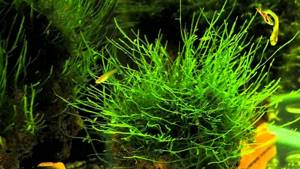
- Icelandic (or bryozoan subulate). This plant is different in that it can bloom (usually from July to September). At this time, the green lump is decorated with small white leaves. Icelandic moss is one of the few that can be grown from seeds.
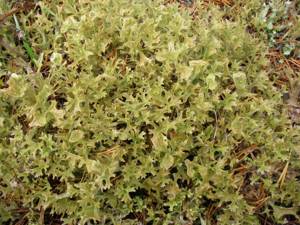
- Scandinavian moss (or moss) is a plant that reindeer eat in winter. This type looks very beautiful in jars that can be placed on the windowsill.

Any containers are suitable for growing moss at home: an aquarium, jars, bowls, vases. In addition, decorative moss has long been used to make wall panels.
How to grow moss at home?
Moss is a wonderful ornamental plant that is less demanding to care for than flowers, more resistant to disease, and does not require pruning, hilling or fertilizing. It doesn't take much effort to grow it at home. The main thing is to decide on the container in which the moss will grow and its variety. The fact is that a bryophyte that grows in water cannot live on a tree or stone, and vice versa.
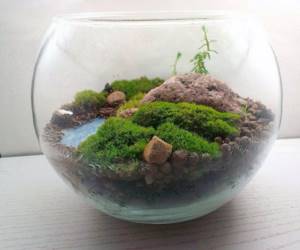
Where can I get material for planting? There are several options:
- You can find a copy in the forest. The moss must be cut off carefully, capturing the turf layer, then there is no need to prepare the soil for growing. This idea has one drawback: forest mosses can become sick or insects can live on them.
- You can buy a copy in the store.
- Grow from seeds. This method takes longer, but is reliable.
You can start sowing seeds from March to April. To grow seeds, you will need a wide container and a special substrate, which should consist of garden soil, humus and sand, taken in a ratio of 2:1:1, respectively. The seeds are sown in moist soil (they do not need to be pressed into the ground or sprinkled with soil). You should cover the pots with seedlings with transparent polyethylene, and then place them in a place with diffused light and a temperature of +22 degrees. In a week, the first shoots may appear.
Bryophyte, which has grown from seeds, has a tap root system. And with vegetative propagation, the root system is superficial.
If the moss is bought in a store, then it must be immediately placed in a container where it will grow. A layer of small pebbles or expanded clay should be placed on the bottom of a transparent container. The second layer is granulated coal, on which the substrate is laid (the soil can be the same as for sowing seeds). It is necessary to spray the soil with a spray bottle. Now that the container is ready, you need to carefully lower the moss into it. The first days after planting, bryophyte should be sprayed daily with a spray bottle. The air humidity in the room where the container with moss is located should be at least 70%. After two to three weeks, the plant will get used to it, adapt to new conditions, and the active growth phase will begin.
As for care, you should adhere to the following recommendations:
- Bryophyte should be watered as it dries. Even though moss loves moisture, too much of it can lead to rot. If the bryophyte becomes dark, then the amount of watering must be reduced.
- Moist, cool air is moss's best friend. Therefore, experienced gardeners recommend placing moss on a loggia, balcony or windowsill.
- Lighting should be moderate. It is better to avoid direct sunlight altogether, as it can dry out the green lump.
Feeding is not mandatory. But you can fertilize moss with kefir and beer. These liquids are mixed with a mixer until smooth and added once every few days for a week.
Plot
143 votes
+
Vote for!
—
Vote against!
It turns out that inconspicuous moss is a very unusual and original plant. Since ancient times, it has served as a “compass” for travelers, is used to insulate a house, and protects the earth from erosion. In addition, he will cure illness and become an aromatherapist. Once upon a time, moss was even eaten! Therefore, it is not surprising that today moss is widely used in landscape design.
Features of using moss in landscape design
One of the main misconceptions of contemporaries is that all bryophyte plants are mistaken for moss, although there is a biological difference. Mosses belong to the class of leafy lower plants. Their body has no blood vessels and is divided into leaves and a stem. There are no roots; their functions are performed by thread-like outgrowths that absorb water. The exception is peat moss, which is called “sphagnum”, which has no analogues of roots.
Moss was first used in landscape design by residents of Japan. And the very first moss gardens were planted at the monastery. After all, the monks believed that such an environment gives beauty to the garden and gives those staying there a sense of peace. The most striking of them is the Saihoji Moss Garden, where close to 130 different species of mosses live, as well as their constant companions - lichens.
Summer residents today, as a rule, plant moss to cover vacant areas and as an alternative to an ordinary lawn. Often in gardens you can see large stones in rockeries, rutariums and rock gardens, completely covered with moss.

Thickets of moss on the site can give the area a new image. An evergreen carpet will become an invaluable decoration of the garden in early spring, when the trees and flowers have not yet woken up. It looks amazing in late autumn, when the latest plants have already prepared for winter sleep. In addition, the mossy covering protects the roots of shrubs and trees from drying out and overheating.
In terms of their decorative properties, representatives of bryophytes can compete with the most beautiful flowers! Depending on the species, there are mosses with an original crown, those that have multi-colored leaves or elegant fruits - spore-bearing capsules. In addition, if the moss has taken root on the site, then this indicates the ecological cleanliness of your area. Only under such conditions is active growth of moss observed.
If you have sculptures, garden figures, fountains, or vases on your site, they can also be decorated with moss. However, they should all be located in the shade. The surface for planting moss should be rough, which can be achieved using an abrasive. A garden design decorated in a retro style looks great; moss can visually age objects.
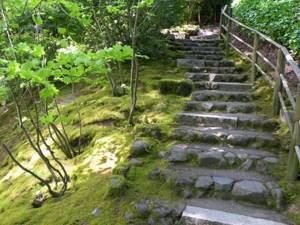
Moss decorates the facades of buildings and roofs of houses. This will help give the place some extra coolness. In addition, moss is good for filling the gaps that appear between tiles on garden paths. Mosses are also used for picturesque framing of paths and paths. With the help of garden moss you can decorate a pond, because this plant simply cannot live without moisture.
Preparation of material for planting
It is customary to begin creating a moss garden on a site with the preparation and collection of material. When harvesting moss, it will be useful for you to follow these tips:
- If you decide to create a moss garden on your own, you can buy a plant at a plant salon or flower shop. Decorative moss for the garden is treated with special means, but does not lose its properties. Ask the seller where it was collected.
- However, you can do things differently. Moss seedlings can be harvested from the forest. It is better to look for it in a shady coniferous forest. Just keep in mind that different moss is used for different purposes. To cover your lawn with moss, choose one that grows on the ground. If you want to decorate trees, then take the one that lives on tree trunks.
- If you don’t have the opportunity to go to the forest, try to find it in the city. Parks, damp walls, old trees, overgrown tree roots, fountains and dry ponds are worth exploring.
- Give preference to mature plants because they are better able to withstand transportation and transplanting.
- The moss collection process requires extreme care. The plant should not be pulled out, so as not to damage or cut their root growths. It is recommended to dig the bush and carefully pull it out of the soil, or separate it from a wooden, concrete or stone surface.
- If you plan to use moss for planting in a large area, then you should choose plants that have different shades. Depending on the general style of the landscape, you can plant different pads, adhering to a checkerboard pattern, and form any geometric shapes or lines. You can also create a multi-colored mossy carpet.
Choosing a location for a moss garden
When setting up a Japanese moss garden, be sure to follow the recommendations below:
- Remember that moss likes to grow in the shade. Dry soil and scorching sun throughout the day will be detrimental to the plant.
- But a little morning sun won't go amiss. This will make the color of the moss more saturated. A good place to plant moss pads is under trees that do not have a very dense and dense crown.
- The most successful directions of the world will be the west and north. By the way, in the impenetrable taiga, moss grows on the northern side on the bark of trees. Consider this when choosing a location for your lawn.
- Moss prefers damp and marshy areas. The soil should be as acidic as possible: pH approximately 5-6, but not more than 6.5. After this you can plant moss.
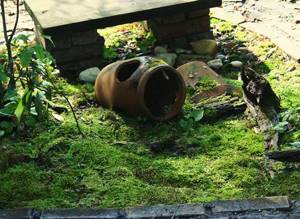
Rules for planting moss on the site
After preparing the material, it’s time to start planting moss, which should be done according to the following instructions:
- In order to treat after injuries and replenish the lack of nutrients and minerals, carry out a special procedure. Place the moss in a container filled with spring water. This will “revive” the plant.
- Remember that mosses transplanted in the fall take root better than those planted in the spring.
- The place for planting this plant should be cleaned: remove fallen leaves and debris, grass and weeds.
- Loosen the soil in the area using a shovel - approximately 2-4 cm deep. In this case, it is necessary to form small holes.
- Prepare the soil for moss from peat and black soil. Add some expanded clay and clay. For more comfortable growth, you can collect substrate in the forest where the moss grew. Pour the soil into the prepared holes.
- It is customary to plant moss turfs, maintaining an interval of 25–30 cm between centers. This is necessary to create the necessary conditions for plant growth.
- You should not press the stretcher too hard, but you need to make sure that no air pockets form. Immerse it 1–2 cm deep, then sprinkle it with earth and press it down a little.
- If you place the moss on a slope, be careful that it does not slide down. To do this, it is recommended to fix it with nails or sticks.
- Mosses that grew on rotting wood must be provided with similar conditions. After all, in order to survive, they precisely require the rotting of wooden surfaces. Therefore, stock up on old driftwood and rotten wood.
- You can use moss to decorate a pond, a pond, or create a decorative swamp. To do this, plant a part of the bank at water level with the plant. As a rule, it is customary to use sphagnum moss, which is capable of forming peat after some time. You can decorate the banks of a dry stream and areas around swimming pools with moss.
- After planting the moss, it is recommended to water it without fail. Also moisturize it several times throughout the day.
- In such a moss garden, various forest plants will look beautiful. These are violets, ferns, oxalis, strawberries, lingonberries. You can also plant shade-tolerant garden flowers. It’s no wonder that coniferous plants go well with moss.
- Against the background of a green mossy cover, the stone backfill looks gorgeous, especially if you use stones of gray shades.
- Inseparable companions of mosses are lichens, which come in a wide variety of colors. Twigs and shrubs covered with lichens will be an excellent addition to your lawn.

Growing moss on rocks
Mossy stones are appropriate in rock gardens and rock gardens. Choose rough stones for growing these plants, with a rough surface. Place them in some shade. To maintain the appearance of a mossy stone (the presence of a soft “carpet” on a hard surface), do not allow it to be completely overgrown with moss. Maintain a 1 to 1 balance.
To grow moss on rocks, use one of these recipes:
- Place healthy moss pads in a blender, add a little water and blend. Then add a little forest soil to the resulting “chatter”. Now you can coat the stone with this mixture. Don't forget to cover it with a film on top, which is recommended to be removed from time to time for ventilation.
- Mix healthy moss pads with sugar (2 tsp) and kefir (half a glass), grind in a blender, add a little water. Apply the prepared mixture to the desired surfaces. Also use film to cover the surface while the moss grows. Don't forget to put geotextiles under the stones, which are dark in color. Then no weeds will get through them.

Moss graffiti is considered a fashionable and chic trend in landscape design. For moss graffiti, prepare a special “paint”. To do this, take the following ingredients: a handful of moss pads, 2 cups of yogurt, 1 cup of beer or water, ½ tsp. Sahara. Add corn syrup if necessary. Blend in a blender until the mixture reaches the consistency of paint. It should not drip heavily from the brush. Using this composition you can make any inscription on walls, wood or concrete surfaces.
Mossy floor care
After arranging a moss garden, it is necessary to take care of it, because the aesthetics of your mossy lawn will depend on your attentiveness:
- New moss growth is a film of green algae that is thin and grows on the surface of the soil. It takes about 5 weeks to wait for the young “pads” to appear. To ensure the moss establishes itself well in your lawn, keep the living mat moist for 3 weeks.
- If plants have died in some areas, new ones should be planted.
- If the moss has dried out as a result of a long drought, it is enough to simply water it thoroughly so that the coating is restored, as shown in the photo of decorative moss for the garden.
- Moss turf does not require cutting, but it should be kept perfectly clean. Remove plant debris, fallen leaves, and weeds.
- In autumn, when the leaves fall, it is advisable to spread a fine mesh on the lawn where moss grows. You can remove fallen leaves by simply rolling it up.
Thus, moss is a beautiful and useful plant on the site. A moss garden is very profitable because it does not require financial investment. Moss can be found in the forest or nearby park. Take stones from the river. Forest plants, berry bushes and conifers can be planted in the background. And it is best to appreciate the beauty of such a lawn in the off-season, since the mossy covering is evergreen.
Decorative or stabilized moss
Decorative, or stabilized, moss is a new design solution that can decorate any home. This moss is used to make paintings and panels, which are attached to boards and hung on the wall. This composition looks very original. Stabilized moss (or sleepy) does not require watering or other special care.
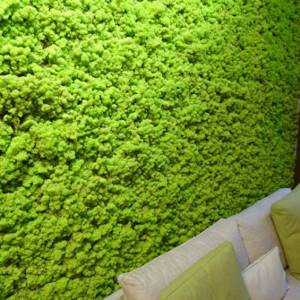
Advantages of decorative moss:
- retains its appearance for 15 years;
- does not require special lighting;
- being in a state of sleep, moss does not grow, which means it does not need to be pruned;
- dust does not settle on it;
- does not cause allergies;
- moss is not toxic;
- resistant to mold and fungi, and not susceptible to diseases.
On an industrial scale, moss is collected by hand. This selection of material allows you to control the balance of the ecosystem. After collection, the moss is thoroughly cleaned of remnants of grass and dirt, and then subjected to a stabilization process. In fact, the plant is put into a dormant state. But it is precisely thanks to the stabilization process that moss can retain its color and properties for a long time, but not grow. The essence of the process is that a special solution based on glycerin is introduced into the moss. As a result, the decorative moss turns out to be soft, elastic and very beautiful.
Is it possible to make decorative moss with your own hands? There is nothing complicated in the process itself. Another thing is that to create a large-scale painting you will need a lot of moss. If you have enough material available, you can make stabilized moss at home.
Icelandic moss is most suitable for growing sleepy moss. This is what is most often used in decoration.
To prepare a solution for creating decorative moss you will need:
- moss - 3 handfuls;
- kefir - 0.5 liters;
- sugar - 2 teaspoons;
- hydrogel - 2 teaspoons;
- purified water - as needed.
All components are loaded into a blender and blended for two minutes. Now you need any natural base, for example, a board or cork tile. The prepared solution must be applied to the surface of the substrate, after which moss should be laid out. It will take five weeks for a sufficient layer of moss to form. All this time, the moss must be kept under the film, thus creating a greenhouse.
While the moss is not sleeping, it needs to be looked after: water it periodically and avoid direct sunlight. If you are not happy with the color of the plant, you can paint it with natural paints. To prepare a mixture that will put moss to sleep, you will need boiling water and glycerin. They must be diluted in a ratio of 2:1, respectively. You should get a thick mass, which should be poured over the entire surface of the moss. In a month, the bryophyte will fall asleep and can be hung in a permanent place.
Buying decorative moss is not a cheap pleasure. The average price per kilogram is $28. If you buy moss in the form of tiles, the price of the panel is $400 per square meter.
If you have any questions, we suggest watching the video, which describes stabilized moss in more detail.
Growing
To get a fluffy cover, buy ready-made store-bought samples or use strips dug from the nearest forest. In the latter case, it is necessary to select mature representatives that will not be harmed by transportation and planting.
They are dug up and carefully taken out with the original layer without damaging the roots. Bryophytes like the western and northern sides; direct sun is destructive for them, but from small morning portions the color becomes richer.
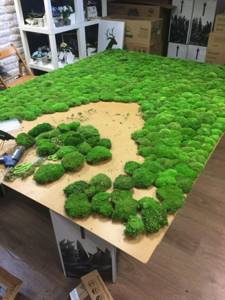
Planting on a slope will require fixation to prevent sliding from rain flows. Experts say that it is better to plant vegetation in the fall. It is first washed with water and the following measures are carried out:
- The site is cleared of turf, debris and loosened.
- A substrate is placed in the recess, which includes peat, black soil, and forest soil.
- The prepared piece is placed with pressure and watered.
- The bushes are planted at a distance of 25 cm.
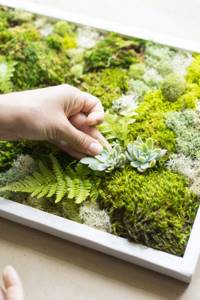
Miniature islands ideally coexist with sorrel, lingonberry, conifers, and lichens. It will take a couple of years until full-fledged mossy areas appear.
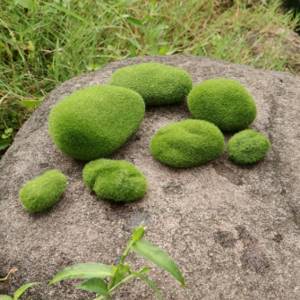
During the first month, the plantings require constant moisture.
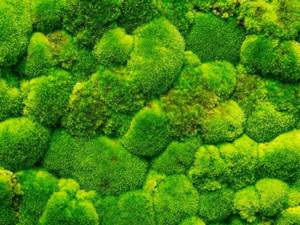
Note!
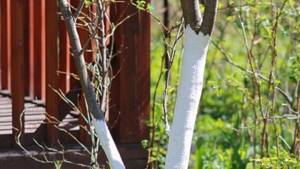
Rules for whitewashing trees: so that it lasts longer, how and how to process it, how to do it correctly and whether it is necessary at all, spring whitewashing of fruit trees
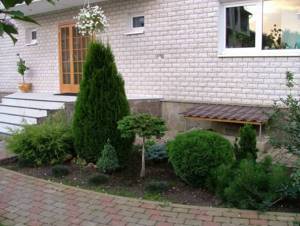
Juniper - meaning and use, diseases and pests, disease prevention, names with photos, varieties of juniper
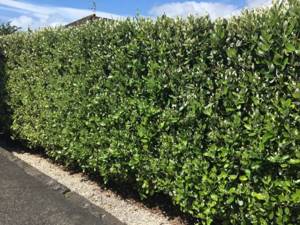
How to make a living fence: an overview of suitable plants, how to choose the best option, types of hedges, making it yourself
Marvelous paintings
With a special composition you can draw original graffiti. To do this, prepare moss with your own hands by placing the following components in a blender:
- two handfuls of washed plants;
- kefir a third of a glass;
- sugar a teaspoon;
- flower hydrogel 3 tablespoons.
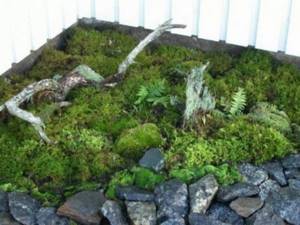
Beat the mixture until it becomes a paste consistency. Having outlined the outline of the design, or using a stencil, it is applied to a stone or concrete surface. Both horizontal and vertical planes serve as a landing bridge. It is important that the surface structure is porous and rough.
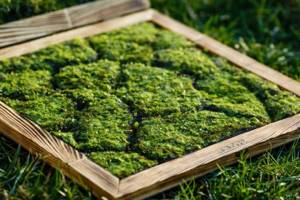
A thick layer guarantees a thick edge.
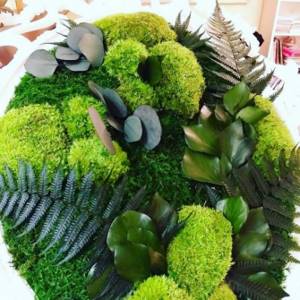
How to grow in the country?
The easiest way to grow bryophyte is in the country, in the yard or in the garden. There is no need to create optimal conditions or maintain the required level of humidity. The main thing is to choose a dark place for planting. If at the beginning of spring seeds were planted at home and moss has already grown from them, then at the end of May it can be safely transferred to the site.
Before planting, you must inspect the specimen. There should be no dry areas on it, and if there are any, it is better to remove them. You will also need two glasses of water and the same amount of milk. All ingredients, including moss, are loaded into a blender and crushed. After this, the mixture must be taken to the place reserved for the moss and distributed over the surface. Now all that remains is to wait for the bryophyte to take root and begin to grow.
In summer, moss does not grow well due to high temperatures and insufficient rain, so it is better to spray the plant yourself to prevent it from drying out.
You can grow moss in an apartment, in a country house, or in an aquarium. The main thing is to choose the right planting material, and in terms of care, bryophyte is unpretentious. An elegant green lump will be a wonderful decoration for the interior, the outer surface of the walls or the local area.
Moss care
- In order for the moss to take root, it is important to keep it moist for at least 3 weeks.
- New moss growth may appear as a thin film of green algae growing on the surface of the soil. It may take approximately 5 weeks for the new pads to grow.
- Replace damaged areas with new ones.
- If prolonged drought and inappropriate reactions have dried out the moss, water it and it will recover.
- After the moss has taken root, it needs to be watered during prolonged drought.

Additional notes:
- The moss should be kept moist for the first two weeks and
- possible to protect from direct sunlight. Moss should start growing within 3 weeks.
- Try to maintain the original design chosen, otherwise the growing moss will colonize the entire area.
This design move has been successfully used by Western designers for a long time. I suggest you get acquainted with the work of Helen Nodding “Spider Castle”.


